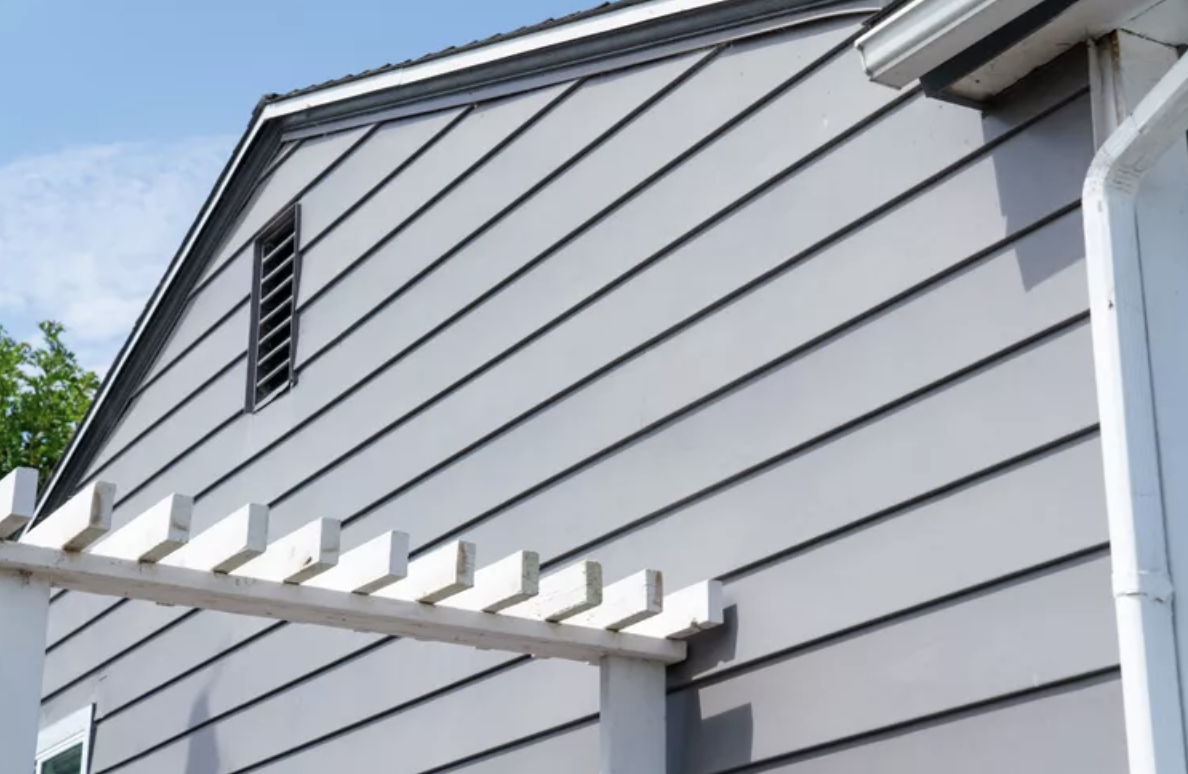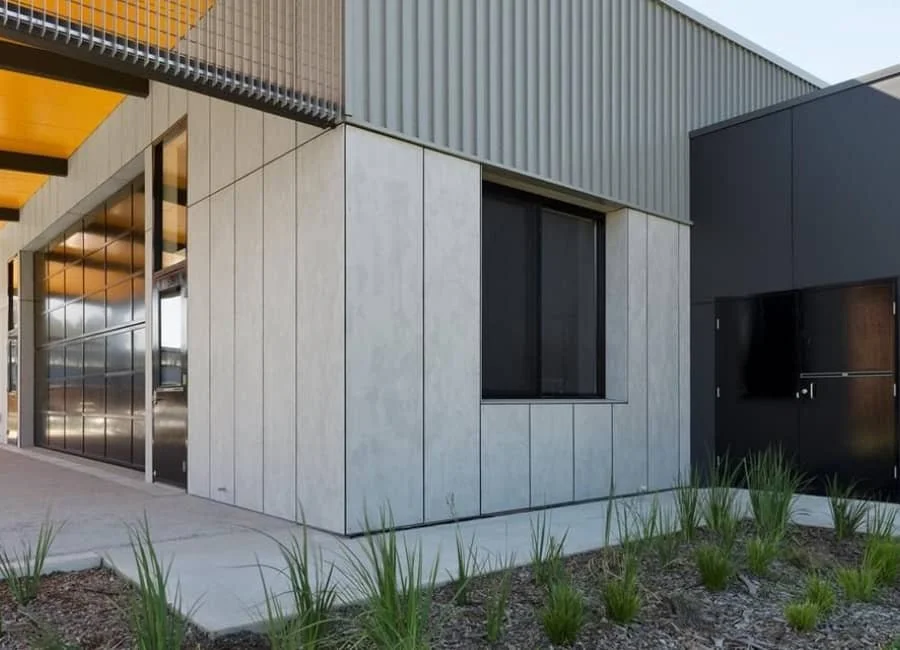8 Types of exterior cladding
Just like a protective skin, wall cladding forms a crucial layer that shields your home from the elements while adding a touch of style. Cladding boards shield the structural integrity of the building and ensure long-term durability. Wall cladding can also contribute to energy efficiency by providing insulation and reducing heat transfer, leading to improved thermal performance and potential cost savings in heating and cooling.
With a wide array of materials available in Australia, homeowners, builders, and designers can choose from various wall cladding options to suit specific aesthetic and functional requirements. From versatile vinyl and natural timber cladding to durable fibre cement, traditional brick, elegant stone, sleek metal, textured stucco, robust concrete and innovative composite cladding, the possibilities are extensive.
Read on to learn about 8 different types of wall cladding for the exterior walls of your home.
Vinyl cladding
Image via The Spruce / Almar Creative
One of the benefits of vinyl cladding is that it provides excellent weather resistance and durability. Whether you're aiming for a modern, rustic or traditional look, there is a colour, style and texture for your project.
Colour options range from classic neutrals to vibrant hues. This external cladding comes in various textures, such as smooth, textured or embossed, providing further opportunities to create visual interest and depth in your home exteriors. Vinyl cladding can mimic the appearance of various building materials such as wood, stone or brick.
Vinyl cladding is highly sought after because of its low maintenance requirements, as it does not require painting or sealing. Its cost-effectiveness makes it an attractive option for those seeking a durable, visually appealing and budget-friendly solution for their home's exterior.
Timber cladding
Image via WR Timbers
Timber cladding exudes a natural and timeless appeal, adding warmth and sophistication to any building. The organic textures and unique grain patterns of timber cladding create a sense of authenticity and elegance, making it a popular choice for external cladding. Common timber species used for exterior cladding include cedar, redwood and pine, with each timber look possessing distinct characteristics in terms of colour, grain and durability.
However, it's important to note that timber cladding requires regular maintenance and weather protection to ensure its longevity. To maintain the best timber look, adequate sealing, staining, and protective finishes are essential to safeguard against moisture, UV rays and potential decay.
Fibre cement cladding
Image via James Hardie
Fibre cement cladding stands out for its exceptional durability and versatility. This lightweight material is renowned for its resistance to fire, insects and rot, providing a reliable and long-lasting protective barrier for buildings. Beyond its robustness and fire-resistant nature, fibre cement cladding offers a wide range of finishes and textures to suit various architectural styles and design preferences.
Whether aiming for a smooth, textured or even a wood grain appearance, fibre cement cladding can deliver the desired aesthetic without compromising on performance. With its combination of strength, resilience and design options, fibre cement cladding is an excellent choice for residential and commercial projects.
Brick cladding
Image via Lumo Homes
Brick cladding is popular for commercial and residential buildings in Australia thanks to its classic and enduring appeal. This wall cladding option's natural beauty and timeless charm contribute to its widespread use across diverse architectural styles. Bricks come in various types, such as clay or concrete, each with distinct colour, texture and size characteristics. Moreover, brick cladding offers exceptional longevity and requires minimal maintenance, making it an ideal choice for Australian homes.
Stone cladding
Stone cladding offers a natural and elegant look that exudes timeless beauty. This type of wall cladding brings a touch of sophistication and luxury to any building exterior. Various types of stone, such as granite, limestone, sandstone and slate, are commonly used for external cladding. Each stone type possesses unique textures, colours, shapes and patterns, allowing for diverse design options.
Apart from its aesthetic appeal, stone cladding boasts exceptional durability, withstanding the test of time and weather conditions. With its enduring strength and high-end aesthetic, stone cladding creates a statement of luxury, elevating the visual appeal of any structure. Speak to an expert stone cladding installer, such as a stone mason, to hear about the full range of options available for your house.
Metal cladding
Image via Architecture & Design
Metal cladding offers a modern and industrial appeal. Various metals, including aluminium, steel and copper, are commonly used for external cladding, each offering distinct visual and functional characteristics.
Metal cladding stands out for its low maintenance requirements, as it does not require painting or sealing. Additionally, metal cladding provides design versatility with options for different finishes, profiles and panel sizes, allowing for creative expression and flexibility in achieving architectural visions. Its sleek appearance, durability and ease of upkeep make metal cladding a compelling wall cladding option for residential and commercial structures.
Concrete Cladding
Image via Rahimisis
Concrete cladding offers a contemporary and minimalist aesthetic, adding a sleek and modern touch to building exteriors. It provides design versatility through various concrete finishes, including precast panels or tilt-up panels, allowing for different textures and patterns.
Concrete cladding is highly durable, withstanding harsh weather conditions and providing long-lasting protection. Its design flexibility allows for customisation, making it suitable for a range of architectural styles.
Composite cladding
Image via NEWTECHWOOD
Composite cladding offers a fusion of different materials, combining the best qualities of each. Composite cladding achieves a balance between aesthetics and functionality by blending materials such as wood fibres and plastic. It provides enhanced insulation and weather resistance, protecting the building from harsh elements while minimising energy consumption.
Composite cladding requires minimal maintenance and boasts exceptional longevity, making it an ideal choice for weather-resistant, durable exteriors that retain their attractive appearance for years to come.
Choosing external wall cladding
Consider the range of quality wall cladding options in Australia when planning your next project, including vinyl, timber, fibre cement, brick, stone, metal, stucco, concrete and composite cladding. Your wall cladding choice should complement other elements of the house exterior, such as the roof, trims, doors and windows, helping you achieve a cohesive and harmonious look for the overall design.
Each building is unique, and so are you, so consider your home's environment and your specific needs and aesthetic preferences. Choosing the right cladding material can enhance the building's beauty, functionality and durability. So, take the time to evaluate your options and make an informed decision that will protect and elevate the appeal of your house.
If you're looking for experienced stone cladding installers, who can help you with stone cladding installation in Melbourne, get in touch with Callea Stone Masonry today.








